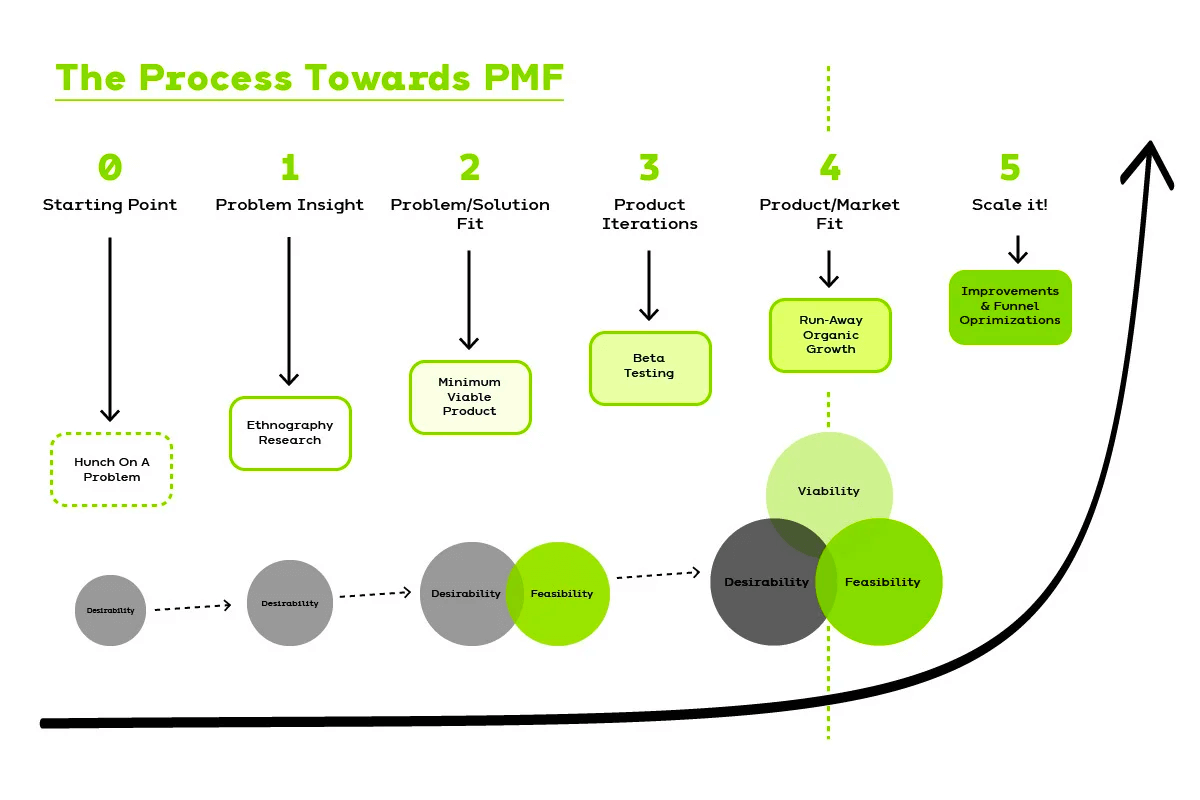Creating a product is not a trump card to milking the market. There are critical analyses that must be made beforehand. First, you must understand your market and determine the prevalent needs before creating a product to meet such needs. If a product fails to meet the needs of consumers, it's bound to fail in the market. In the same vein, where a product has outlived its usefulness, there is bound to be a steady decline in its market value and overall profit.
But how do you keep your product afloat in the market? How do you manage your product such that it maintains its usefulness to consumers for a long time? These are questions that will be resolved under product management. Product and market analysis are important to creating, managing and further growing a product. For all it is worth, your product can remain in the market eternally as long as it serves a purpose, and consumers are constantly buying, using, and referring others to your product. This is where product-market fit comes in.
What is product-market fit?
Simply speaking, product-market fit is a point where your target consumers are steadily buying, using, and referring others to your product such that there is a steady rise in your product's market value and growth. This is the peak where the yields from consumer referrals trump that of your ads campaign. Read how to make a product demo that stands out.
But first let’s remember how to to build a product and where should you start. building a product is the combination of the answers to the following questions:
- Why do I want to build a product?
- What product do I want to build?
- How do I build this product?
Just like Marc Andreesen puts it, product-market fit is all about putting a product that satisfies the market need. You find the needs that are not being catered for, and you create a product unique to such needs.
What's the point of product-market fit?
Looking at the nature of the product-market fit, you can tell it is of high importance to every product in the market. It literally determines how long a product will last, and how profitable it will be in the market.
You need to be certain about the size of the market you bring your product into before making any moves. You cannot scale a product where there are little to no customers. Where no one is buying, there is a certainty that no one will refer, and that is a negative sign for the product’s sustainable growth. Product-market fit will determine if the target market can first sustain the product and generate profit, before scaling further via consumer use and referrals.
One of the very important points here is that when we say product-market fit, we usually understand and imagine the fit in their early stages. It is surely very important, but as the technologies, so the customer’s needs keep evolving and the reality before product-market fit and after identifying the product-market fit can be quite different. Let’s take Blackberry as an example: their USP – the full keyboard which grew their business enormously was the same reason that saw the fall as the needs of their customers have completely changed during the time.
How can I measure product-market fit accurately?
There is no trump strategy in determining product-market fit. As a matter of fact, there are multiple metrics that can help you measure it. Just like Dan Olsen puts it in his product-market fit pyramid, how you execute your value proposition in correspondence to the underserved market needs would determine your product-market fit. In other words, product-market fit lies somewhere in-between value proposition and the underserved market needs.
To ascertain if you're on track with determining product-market fit, here are some pointers from venture capitalist Andrew Chen:
- Carry out a market survey to determine the underserved needs. This will determine the product you're about to create to seize the market: research your future market and identify what are the real needs that you can satisfy.
- Implement a survey on your target customers. You can do this by testing your products with live customers. This helps with getting feedback on your product, which will help in identifying the user’s needs that will lead to modifying or upgrading your product further.
- Observe the pitfalls of your competition. What can you offer differently from your competition that will persuade your target customers to opt for your product? What are you doing differently?
- Review customer pain points. A complicated product can't go far in the market. Modify your product's UI/UX to cater to simplicity, easyness and usability.
- Observe relevant product metrics such as customer retention, and compare this with that of your competition. This is probably one of the most important points as data will lead you to success, eventually.
Having the correct metrics on a constant monitoring will help you quickly understand your own pain points and you will be able to quickly react. Shortening the time to finding your fit in the market is extremely important: just because you will be faster in the market. I personally take the following product metrics under consideration while working with new products (these can slightly differ based on the industry):
- NPS/Trust Score
- Market share growth rate
- Conversion Rate
- Churn Rate
- Customer Retention
- Bounce rate
- Growth Rate
…and some more.
It is extremely important to research and identify the key metrics for the industry that you are going to bring your product to. First of all identify the metrics and second, research the average success rates of those metrics in the industry. For example, the average eCommerce conversion rate globally is 3.63% but specifically in Food and Beverage market it is 6% and in Luxury & Jewelry it is 1.38%. The difference of these numbers is huge and can be crucial in analysing your growth trajectory.
The process towards PMF
Going by the pointers above, one thing is clear – you need to critically survey the market to determine if your product fits perfectly. To achieve product-market fit, you need to first define your target market and identify the needs of your target group, before curating a value-driven product in line with the identified underserved needs. Once this is done, head on to testing your product with customers. Note that the purpose of the test is to practically understand the market outside your analyses. Depending on the feedback, you can revise your product accordingly and continue with iterations.
Just remember one thing: there is no one true recipe to finding your fit in the market! This article, so all the other ones are just guides to help you get some insights and tips on the upcoming journey! Every product is unique and it always demands a unique approach. The good thing is that there is already quite some history and uses cases that can help you prepare for your upcoming challenges with your newborn product.
Be open to feedback, be creative with your approaches, and use your vision to find your own mixture of success!
Common questions about product-market fit
1. How do I know when I’ve achieved product-market fit?
You’ve likely reached product-market fit when customers consistently buy, use, and recommend your product. High retention, positive reviews, and word-of-mouth referrals are key indicators.
2. Can product-market fit change over time?
Yes. Markets evolve, and so do customer needs. Even established products can lose their fit if they fail to adapt. Regularly revisiting your customer insights and product data helps you maintain alignment with the market.
3. What’s the best way to test for product-market fit early on?
Before launch, validate your ideas through customer interviews, prototype testing, and small-scale pilot programmes. Focus on real feedback rather than assumptions, it’s the fastest way to refine your product and reduce risk.








